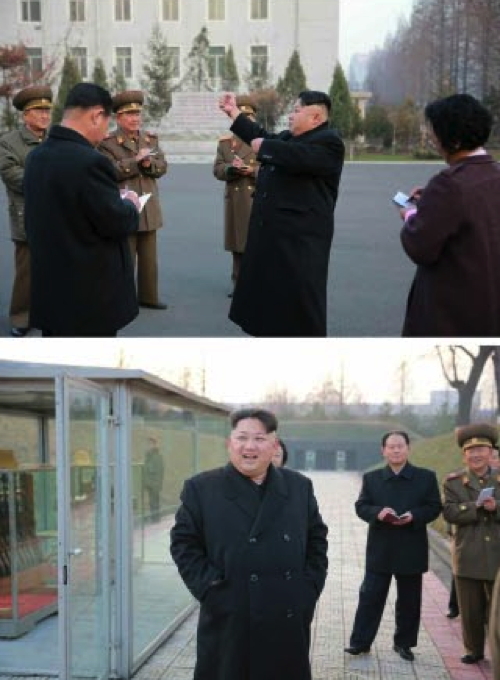Kim Jong Un Visits Pyongchon Revolutionary Site

Kim Jong Un tours the P’yo’ngch’o’n Revolutionary Site in central Pyongyang (Photos: KCNA/Rodong Sinmun).
Kim Jong Un’s last observed appearance was his attendance at a photo-op with KPA service members and officers that participated in the 4th Conference of KPA Artillery Personnel
DPRK state media reported on December 10 (Wednesday) that Kim Jong Un (Kim Cho’ng-u’n) visited the recently refurbished P’yo’ngch’o’n Revolutionary Site in central Pyongyang. Also in attendance were VMar Hwang Pyong So (Director of the Korean People’s Army [KPA] General Political Department), Col. Gen. Yun Tong Hyon (Vice Minister of the People’s Armed Forces), Jo Yong Won (deputy director of the Workers’ Party of Korea [WPK] Organization Guidance Department), Hong Yong Chil (deputy director of the WPK Machine-Building [military industries] Department) and Lt. Gen. Jang Chang Ha (deputy director of the KPA General Political Department).
The P’yo’nch’o’n Revolutionary Site is a former munitions factory, which was visited on several occasions by DPRK founder and late president Kim Il Sung (Kim Il-so’ng), his wife Kim Jong Suk (Kim Cho’ng-suk) and a young KJI. It routinely appears in official documentaries about revolutionary history and on the DPRK’s military industrial complex. After arriving at the site, Jong Un noted that “the President came to the P’yo’ngch’o’n plain in October 1945, seventy years ago to choose the site for a munitions factory.” Jong Un looked at a commemorative mosaic of his father, grandfather and grandmother, other markers of the “Road of Revolution,” former areas of the P’yo’ngch’o’n munitions factory and the museum.
According to KCNA, Kim Jong Un said that “every part of the site has been reintegrated in the principle of historicism and its education compound and greening are neat and admirable. The education in the So’ngun (military-first) idea occupies an important party in the Party’s ideological work. The P’yo’ngch’o’n Revolutionary Site has a very important role in conveying the immortal So’ngun revolutionary exploits performed by the peerlessly great persons of Mt. Paektu and encouraging the servicepersons and civilians to remain loyal to the Party’s So’ngun (military-first) leadership.” Jong Un “advanced such tasks for operating the site [such] as matter of displaying the photo of the President test-firing a submachine gun at the shooting range, intensifying the work to discover historic data, meticulously organizing the visits to the site, steadily raising the ability of its lecturers and conducting a brisk itinerant lecture and bettering the environment of the site.”
Jong Un said that the “P’yo’ngch’o’n Revolutionary Site is just a native place of the So’ngun arms. Every gun, produced thanks to the tireless efforts of the President, has formed a forest of arms defending the Party and revolution, the country and its people and the historic gun report made by him at the site turned the DPRK into a powerful nuclear weapons state ready to detonate self-reliant A-bomb and H-bomb to reliably defend its sovereignty and the dignity of the nation. If we struggle in the same spirit with which the workers produced submachine guns by their own efforts just after the liberation of the country when everything was in need we can further build up our country into a powerful one no enemy dare to provoke. [We should] steadily put big efforts on the development of country’s munitions industry associated with devoted efforts of Kim Il Sung and Kim Jong Il.”

